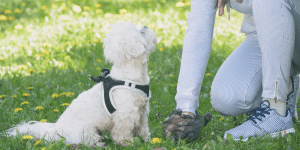Lungworm In Dogs.
Lungworm is carried by hosts such as snails, slugs and in some cases, frogs. There are several different types of lungworm but the type that generally infects dogs is known as Angiostrongylus Vasorum. This Holidays4Dogs article will provide information on the lungworm parasite, including symptoms to look out for and treatment available.
The parasite can be picked up by dogs by licking, or eating slugs and snails. It is also possible for them to ingest eggs from grass where snails have left a trail.
where snails have left a trail.
Another way for dogs to become infected is from eating the dung of infected foxes. It is also possible for drinking water to be infected if snails have access to outside water bowls, ponds, plant trays, or water features.
While lungworm infestation in dogs is relatively uncommon, it is being described as an ‘emerging disease’ . Lungworm tends to occur in specific ‘hot spots’ throughout the UK.
Lungworm in dogs first appeared in the UK in 1975 and was hosted by a greyhound imported from Ireland. During the 80’s and 90’s it became prevalent in Cornwall and south Wales. It has reputed to have been travelling further northwards, across the UK, in recent years.
Once ingested by the dog, lungworm larvae make their way through the gut wall and into the bloodstream. It eventually reaches the right side of the dog’s heart, where it develops into an adult worm. The worm then releases eggs, which hatch out into the bloodstream and make their way to the lungs and the alveoli; (tiny air pockets within the lungs).
Symptoms of lungworm in dogs.
- Chronic cough.
- Loss of appetite.
- Weight loss.
- Difficulty breathing.
- Reluctance to exercise.
Prevention and Treatment.
A heavy infestation of lungworms can potentially be a life threatening. However, catching the cycle early gives the dog a much better chance of recovery. Eradicating the worms is a matter of giving the dog oral medication to kill the parasites. If you suspect your dog may have become infected, contact your vet for advice as soon as possible.
Your vet will examine your pet, take a full history and test to see if worms are present. There is a blood test available now which is much more accurate than faecal testing; ask your vet for further advice.
You can take preventative measures by periodically treating your dog for lungworm, as you would do for roundworms, or tapeworm. However, make sure you are treating the dog with the correct product, because not all are effective against lungworm. All-in-one dog worming tablets available over the counter, for example, are unlikely to be effective against lungworm.
Tips to help prevent the spread of lungworm.
-
If you have dog bowls, or water features outdoors, ensure these are inspected and cleaned regularly. Consider covering ponds with netting.

-
It is possible for smaller snails to crawl inside dog toys left outside overnight, so remember to pick up toys in the evening.
-
Poop scoop – if your dog is already infected, his pooh will be infected. This will spread the parasite to other slugs and snails, since they will eat dog poop.
-
Be vigilant and try to make sure your dog does not eat grass where snails might be present.
It is important not panic about your dog catching lungworm. The risks are generally lower than the likelihood of him contracting other parasites such as tapeworms, fleas and ticks.
Next time you routinely visit your vet ask for advice on the local risk factors for lungworm, as well as treatments available should you decide to take preventative measures.
Please note : this Holidays4Dogs article is for information only and is not meant to replace examination by a qualified vet. Always consult your veterinary surgeon on matters relating to your pets health.



